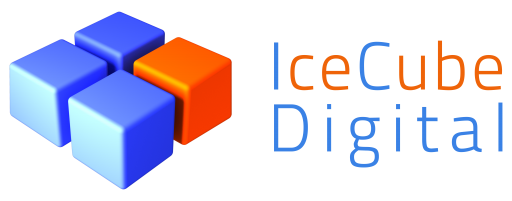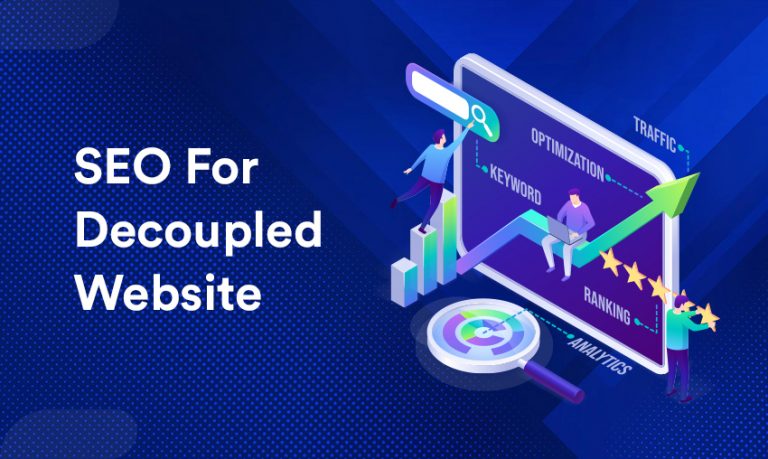An enterprise needs to optimize its website to ensure that it is easier for its customers to find them. This is also important to get listed above the competitors on the various search engines used for the omnichannel marketing strategy.
The enterprise should opt for the website platform that allows easy pull-off for search engine optimization strategies. In addition, implementing the headless content management system (CMS) with business features and architectural characteristics will help strengthen the SEO efforts.
What is Meant by a Decoupled/Headless Website?
A headless content management system (CMS) is a back-end-only system that serves as a content repository. This system delivers the content as data through an Application Programming Interface (API) instead of coupling the content to any specific output. This allows for displaying the data on multiple platforms.
Headless CMS or website means removing the head or the front end of the website body. Doing this behaves like a completely independent back-office providing greater flexibility. Implementing this newer headless CMS utilizes the API calls for displaying the contents on various supports like applications, websites, IoT, etc. This enables the enterprise to create content from the CMS for the website.

See How Our Experts Can Drive More Traffic to Your Website!
SEO: Boost your rankings and drive more organic traffic today!
Website Design/Development: Create a stunning website that converts visitors into customers.
Paid Media: Reach the right audience at the right time with expertly managed paid media.
Why are Headless Sites So Popular?
The headless and decoupled architecture has been used for some time and has been gaining more demand recently as many enterprises are looking forward to delivering their content to various locations outside their standard web browsers. The traditional CMS platform for eCommerce serves the content to the desktop-first. This leads to increased traffic, and most customers transact in this space. This approach worked fine as it connected the front and the backend in the traditional method.
As the shopping trend has changed drastically, consumer behaviors have also switched from using desktops to multiple devices like laptops, mobiles, tablets, etc., along with different locations. This has created challenges for marketers targeting these customers across the omnichannel strategy.
This demanded having additional flexibility for serving the content across the devices mentioned above, providing a personalized approach for content and buying, serving the customers at a faster speed with an improved shopping experience and enhanced control for content customization to stay ahead of the competition.
Impact of Headless Sites on SEO
These headless CMS are built from scratch and allow for accommodating individual business demands. This allows for providing solutions to a range of unique challenges for SEO. Based on the content and the range of eCommerce websites, various sizes of catalogs have been adopted by the headless CMS approach.
There are 2 different stages for working with the clients using the headless CMS, and these include:
- Migration and building stage: In this stage, the client is already using the traditional CMS approach and needs to migrate to the headless approach. This stage allows for building the SEO requirements from scratch and needs to ensure that the migration from the traditional approach to the headless ones leads to improving the performance.
- Expansion stage: In this stage, the client is already using the headless approach, and now they are looking forward to growing their SEO traffic
Optimizing Headless Website for SEO
The basics of SEO, such as keyword research, regular publishing of high-quality, link building, relevant content, etc., of SEO remain constant regardless of the CMS approach used. Implementing the headless CMS does not provide SEO tools, and it needs to be built.
Several elements need to be considered while optimizing the headless website for the SEO trends in 2025, and these include:
- Optimize natural language: The search engines use AI-advanced techniques for expansion beyond keyword-heavy content. Advanced technologies like Natural language processing (NLP) are easier to understand synonyms, intensions, and natural language. Therefore, content creators and marketers should use the keywords as naturally as possible.
- Optimize content for voice search: With the new emerging technologies, voice search has also gained importance in the last few years. Around one-third of the population around the globe uses the mobile voice search approach. This trend is increasing and will double up in the coming few years. Implementing the headless CMS is that it can create content that can be used with ease across different devices like smartphones, desktops, voice devices, etc. Furthermore, optimizing the voice search allows for focusing on the natural language and making the content best suited for the featured snippets.
- Optimize your metadata: The marketer or the developer should be aware of the meta tags while using headless CMS solutions. The commonly used meta tags include title tags, keywords, meta descriptions, etc. These details are the ones that are the synopsis of the details available on the webpage. It helps the various search engines understand the content and help the users decide if they want to click on the page for further details.
- Use SEO-friendly URLs: The search engines use the web page’s URL to determine the website’s content. This can include a keyword that you want your page to rank for. The SEO-friendly URLs will help meet the needs of the searchers and the users. The URLs optimized for the SEO should be short, rich with keywords, and give an idea about the page’s content. It not only helps the readers to identify but also helps the search engines to index and prompt it to the user effectively.
- Parameters and variants: The developer can customize their parameters and naming as there are no set standards. Different organizations or professional SEO agencies can come up with their box thinking for their names. Examples include the names like Shopify or Magento SEO services, etc.
- Maintain your URLs: If the enterprise is migrating from one CMS to another, the developers can keep their URLs the same for all the categories, products, and listings.
- Dynamic Serving: It is a more significant advantage to the enterprise if they serve the content dynamically from the server to the different devices. It has the benefit of enhanced speed and user engagement.
Bottom Line
SEO is a very important element of the omnichannel marketing campaign. Most enterprises prefer implementing the headless CMS compared to the traditional CMS approach. This headless CMS allows the sales and marketing team and the developer team to create robust metadata, thoughtful canonical tags, customized URLs, proper markup, and faster launching of the new content campaigns.

























